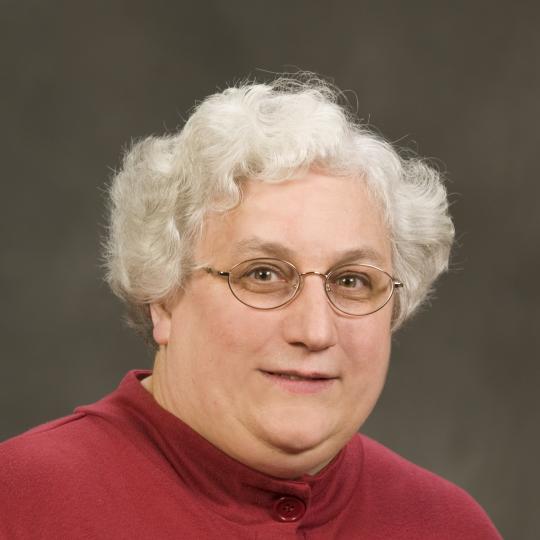About me
Dr. Arbogast is a Professor in the Department of Physiology at SIU School of Medicine. Dr. Arbogast is a member of The Endocrine Society, Society for Neuroscience, American Association for Advancement of Science and Sigma Xi. She has served as a regular member on the Neuroendocrinology, Neuroimmunolgy and Behavior study section at the National Institutes of Health as well as ad hoc on other National Institutes of Health study sections. She has also reviewed grants for the National Science Foundation and the Health Research Council of New Zealand.
Research in the Arbogast lab is focused on reproductive neuroendocrinology. Neurons in the hypothalamic region of the brain regulate hormone release from the anterior pituitary gland and anterior pituitary hormones act on peripheral target tissues. In turn, hormones from the pituitary gland and peripheral target tissues, such as the ovary, feedback to regulate these hypothalamic neurons in neuroendocrine feedback loops. The tightly regulated interactions among the hypothalamus, pituitary and ovary allow for reproductive competence. The survival of the young in mammalian species is dependent on adequate nutrition being provided. The best nutrition for a newborn infant is breast milk from the mother. The hormone, prolactin, is essential for mammary gland development and milk production and its secretion from the pituitary gland is regulated by hypothalamic neurons.
One focus of the laboratory is the cellular and molecular mechanisms involved in the regulation of hypothalamic neuronal activity, particularly as related to feedback to the hypothalamus by prolactin from pituitary gland and steroid hormones, estradiol, progesterone and androgens from the ovary. The effect of these hormones on hypothalamic neurons are evaluated both individually and interactively. These studies involve evaluating the transcriptional and post-translational control of neuropeptides, regulatory enzymes in neurotransmitter biosynthesis, cell signaling pathways and receptors. An integrative approach is used to identify roles of cell signaling and molecular mechanisms in normal physiologic or endocrine states.
The second focus of our laboratory is the hypothalamic control of prolactin secretion during the female reproductive cycle, pregnancy and lactation. Although the best established role for prolactin is during lactation, prolactin is known to have over 300 actions in vertebrate species. Hypothalamic dopamine neurons provide the major inhibitory control to prolactin release and thus are of key interest in these studies. Other neuronal inputs may influence these dopaminergic neurons, but the neuronal circuitry is incompletely understood. Complex physiological changes occur during lactation, including increased metabolic demands and reduced fertility, and hypothalamic neurons have key roles in modulating these changes. Studies in our lab evaluate how these neuronal groups interact to control prolactin secretion, hormonal and neuronal signals regulating hypothalamic neurons and the cellular and molecular changes in these hypothalamic neurons during lactation.
Gender
Education & training
Publications
Jensik PJ, Arbogast LA. Regulation of cytokine inducible SH2 domain protein (CIS) by ubiquitination and Elongin B/C interaction.
Mol Cell Endocrinol 401:130-141, 2015 Jensik PJ, Arbogast LA. Differential and interactive effects of ligand-bound progesterone receptor A and B isoforms on tyrosine hydroxylase promoter activity.
J Neuroendocrinol 23:915-925, 2011 Tavakoli-Nezhad M, Arbogast LA. Mu and kappa opioid receptor expression in the mediobasal hypothalamus and effectiveness of selective antagonists on prolactin release during lactation in rats.
Neuroscience 166:359-367,2010 Liu B, Arbogast LA. Progesterone decreases tyrosine hydroxylase phosphorylation state and increases protein phosphatase 2A activity in the stalk-median eminence of rats on proestrus afternoon.
J Endocrinol 204:209-219, 2010 Liu B, Arbogast LA. Gene expression of intracellular and membrane progesterone receptor isoforms in the mediobasal hypothalamus of rats during pro-oestrus.
J Neuroendocrinol 21:993-1000, 2009 Liu B, Arbogast LA. Phosphorylation state of tyrosine hydroxylase in the stalk-median eminence is decreased by progesterone in cycling female rats. Endocrinology 149:1462-1469, 2008 P
Grants
NIH R03 HD078622-01 Androgen and progesterone actions on catecholaminergic neurons: In vivo study, Project period 9/18/14-8/31/17
PI NIH R01 HD048925, Opioid-Dopamine Interactions During Lactation, Project period 08/01/05-05/31/12
PI NIH R01 HD45805, Prolactin Feedback to Hypothalamic Dopaminergic Neurons, Project period 04/01/05-03/31/12

